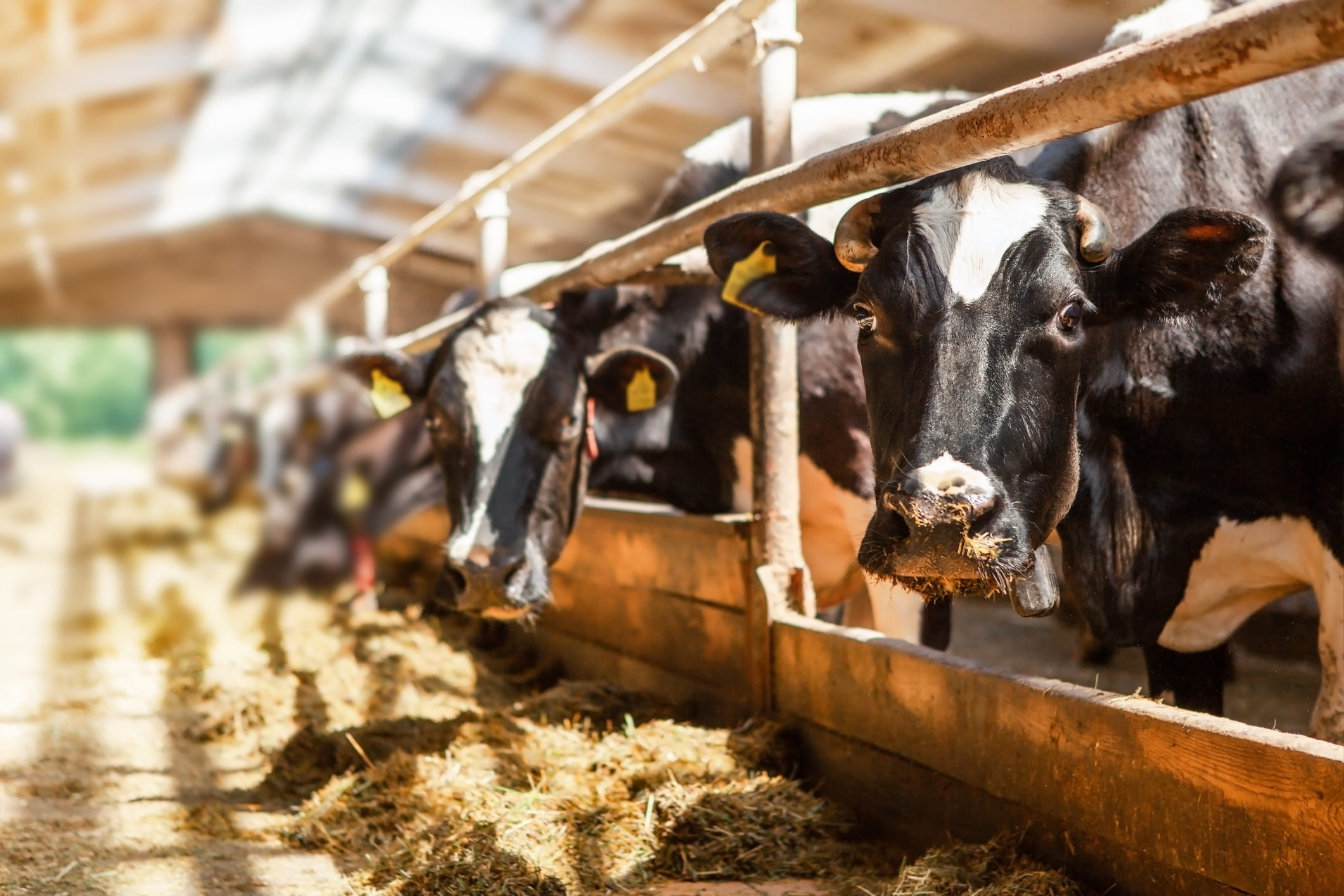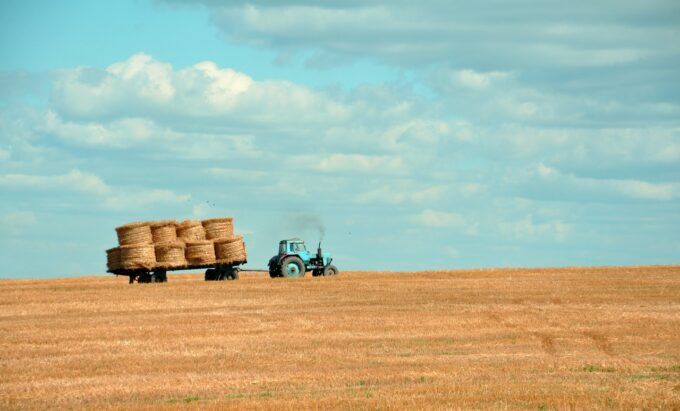AI to the farm: Nine start-ups join UK accelerator to reinforce agri-food supply chains – AgTechNavigator.com

Report on the High Growth AI Accelerator for the UK Agri-Food Sector
Introduction: A Strategic Initiative for Sustainable Development
Digital Catapult has launched the High Growth AI Accelerator, selecting nine pioneering start-ups to drive innovation within the UK’s agri-food sector. This initiative, part of the Innovate UK BridgeAI programme, is designed to enhance supply chain resilience and integrate advanced artificial intelligence solutions. The programme directly addresses several United Nations Sustainable Development Goals (SDGs) by connecting innovators with industry leaders such as Nestlé and Dale Farm to tackle critical environmental and production challenges.
Alignment with Sustainable Development Goals (SDGs)
The accelerator’s core mission is to leverage AI to create a more sustainable, efficient, and resilient agri-food system, contributing to the following SDGs:
- SDG 2: Zero Hunger: By improving crop yields, optimising feed, and managing disease, the innovations aim to enhance food security and promote sustainable agriculture.
- SDG 9: Industry, Innovation, and Infrastructure: The programme fosters deep tech innovation to build resilient infrastructure within a vital economic sector.
- SDG 12: Responsible Consumption and Production: Solutions focus on reducing waste, optimising resource use, and improving production efficiency to ensure sustainable patterns.
- SDG 13: Climate Action: Several projects are dedicated to mitigating climate impact by reducing greenhouse gas emissions like carbon and nitrous oxide.
- SDG 15: Life on Land: Initiatives focused on biodiversity monitoring and habitat validation contribute directly to protecting terrestrial ecosystems.
Targeted Innovation Areas and Participating Start-ups
Enhancing Sustainable Production and Food Security (SDG 2 & SDG 12)
A primary focus is on improving the efficiency and sustainability of food production through data-driven insights. The selected start-ups in this domain include:
- Rubik’s Data: Developing a platform to forecast milk volumes and optimise cattle feed, reducing waste and improving resource management.
- Barefoot Lightning: Connecting farm data to its feed platform to enhance quality and lower production-related emissions.
- FISCROP: Creating a modelling tool for improved plant disease detection and enhanced feed efficiency.
Climate Action and Environmental Protection (SDG 13 & SDG 15)
Several start-ups are developing solutions to address climate change and biodiversity loss, which are critical for the long-term viability of the agri-food sector.
- Crop Intellect: Scaling a Measurement, Reporting, and Verification (MRV) system to support projects aimed at mitigating nitrous oxide (N₂O) emissions.
- Carbon Rewild & Wilder Sensing: Refining AI tools for automated bird classification and habitat validation to support biodiversity monitoring.
- Mozaic Earth: Advancing a smartphone-enabled solution for monitoring biodiversity and biomass, crucial for tracking Scope 3 emissions and ecosystem health.
Strengthening Global Supply Chains and Resilience (SDG 9 & SDG 12)
To ensure the stability and sustainability of global supply chains, particularly for commodities like cocoa, the following innovators are developing targeted solutions:
- Data Dynamics: Testing a geospatial intelligence platform to monitor cocoa farms in West Africa, promoting responsible sourcing.
- FarmSmarter: Building a tool for the early detection of Cocoa Swollen Shoot Virus in regions with limited connectivity, protecting crop yields and farmer livelihoods.
Stakeholder Perspectives on Sustainable Innovation
Industry leaders have endorsed the accelerator as a critical step towards a future-ready agri-food sector. Jessica Rushworth of Digital Catapult emphasised the goal of making businesses “adaptable to environmental challenges.” Sara El-Hanfy of Innovate UK highlighted the programme’s potential to unlock “sustainability and global leadership.” Partners from Nestlé, Hartpury University, and Peacock Technology reiterated the transformative power of AI in converting data into actionable insights for efficiency, biodiversity monitoring, and resilience, thereby advancing the sector’s contribution to global sustainability targets.
Conclusion and Next Steps
The High Growth AI Accelerator represents a concerted effort to embed sustainable practices and technological innovation within the UK’s £14.5 billion agri-food sector. By directly targeting challenges related to climate change, food security, and biodiversity, the initiative is poised to make significant contributions toward achieving the Sustainable Development Goals. The progress of the participating start-ups will be presented at a showcase event later in the year, marking a key milestone in the journey toward a more sustainable and resilient agricultural future.
SDGs Addressed in the Article
-
SDG 2: Zero Hunger
- The article focuses on the UK’s agri-food sector, aiming to “strengthen supply chain resilience” and address challenges like “fluctuating yields.” The development of AI solutions for “dairy forecasting & feed optimisation,” “plant disease detection,” and improving “efficiency, sustainability, and resilience” in farming directly contributes to promoting sustainable agriculture and ensuring stable food production.
-
SDG 9: Industry, Innovation, and Infrastructure
- The core of the article is about the “High Growth AI Accelerator,” a programme designed to “scale deep tech innovation.” It highlights the role of the “Innovate UK BridgeAI initiative” in connecting “AI-first start-ups with industry leaders” to solve real-world challenges. This fosters innovation and upgrades the technological capabilities of the agri-food industry.
-
SDG 12: Responsible Consumption and Production
- The initiatives described aim to improve resource efficiency. For example, Rubik’s Data Mule platform helps “optimise cattle feed,” and Barefoot Lightning’s platform aims to “improve quality and reduce emissions.” These actions support the sustainable management and efficient use of natural resources within the production cycle.
-
SDG 13: Climate Action
- The article explicitly mentions tackling “climate pressures.” Several start-ups are working on climate mitigation and adaptation. Barefoot Lightning’s project focuses on “carbon & production efficiency” to “reduce emissions,” while Crop Intellect is scaling a system for “Nitrous oxide removal.” This demonstrates direct action to combat climate change and its impacts.
-
SDG 15: Life on Land
- A significant portion of the article is dedicated to biodiversity. Start-ups like Carbon Rewild and Wilder Sensing are refining “AI tools for bird classification and habitat validation.” Mozaic Earth is scaling a “biodiversity and biomass monitoring solution.” This work directly addresses the need to halt biodiversity loss, a key component of SDG 15, with Hartpury University praising the programme’s role in “advancing bioacoustic biodiversity monitoring which is needed to address biodiversity decline.”
Specific SDG Targets Identified
-
SDG 2: Zero Hunger
- Target 2.4: “By 2030, ensure sustainable food production systems and implement resilient agricultural practices that increase productivity and production…” The article’s entire premise of using AI to create “agri-food resilience,” adapt to “environmental challenges,” and achieve “significant improvements in efficiency, sustainability, and resilience” aligns perfectly with this target.
-
SDG 9: Industry, Innovation, and Infrastructure
- Target 9.4: “By 2030, upgrade infrastructure and retrofit industries to make them sustainable, with increased resource-use efficiency and greater adoption of clean and environmentally sound technologies…” The accelerator program is a vehicle for introducing AI as an “environmentally sound technology” to make the agri-food sector more sustainable and efficient.
- Target 9.5: “Enhance scientific research, upgrade the technological capabilities of industrial sectors… encouraging innovation…” The program, which has “facilitated £2.4 million in funding,” directly supports research and development by “AI-first start-ups” to enhance the technological capabilities of the agri-food sector.
-
SDG 12: Responsible Consumption and Production
- Target 12.2: “By 2030, achieve the sustainable management and efficient use of natural resources.” The projects on “feed optimisation” and improving “production efficiency” are direct efforts to use resources like cattle feed more efficiently.
-
SDG 13: Climate Action
- Target 13.1: “Strengthen resilience and adaptive capacity to climate-related hazards and natural disasters in all countries.” The program aims to make agrifood businesses “future-ready and adaptable to environmental challenges,” which includes building resilience against “climate pressures.”
-
SDG 15: Life on Land
- Target 15.5: “Take urgent and significant action to reduce the degradation of natural habitats, halt the loss of biodiversity…” The development of AI tools for “wildlife & habitat insights,” “bird classification,” and “biodiversity and biomass monitoring” are concrete actions aimed at understanding and halting biodiversity loss.
Indicators for Measuring Progress
-
For SDG 2 (Zero Hunger)
- Indicator (Implied): Volume of production and efficiency gains. The article implies measurement through metrics like “milk volumes” forecasted by Rubik’s Data Mule and overall improvements in “production efficiency” and “feed efficiency” from the various AI tools.
-
For SDG 9 (Industry, Innovation, and Infrastructure)
- Indicator (Mentioned): Research and development funding. The article explicitly states that Digital Catapult has “facilitated £2.4 million in funding within a year of operation,” which serves as a direct indicator of investment in innovation.
-
For SDG 13 (Climate Action)
- Indicator (Implied): Greenhouse gas emissions reduction. The article points to this through projects focused on “carbon & production efficiency,” “Scope 3 emissions tracking,” and a system for “N₂O mitigation.” Progress would be measured by the amount of emissions reduced or mitigated.
-
For SDG 15 (Life on Land)
- Indicator (Implied): Data on species and habitat health. The AI tools for “bird classification,” “habitat validation,” and “bioacoustic biodiversity monitoring” are designed to generate data that can be used as an indicator to track changes in biodiversity and address “biodiversity decline.”
Summary Table of SDGs, Targets, and Indicators
| SDGs | Targets | Indicators |
|---|---|---|
| SDG 2: Zero Hunger | 2.4: Ensure sustainable food production systems and implement resilient agricultural practices. | Implied: Increased agricultural productivity and efficiency (e.g., forecasted milk volumes, improved feed efficiency). |
| SDG 9: Industry, Innovation, and Infrastructure |
|
Mentioned: Research and development funding (£2.4 million facilitated). |
| SDG 12: Responsible Consumption and Production | 12.2: Achieve the sustainable management and efficient use of natural resources. | Implied: Metrics on resource efficiency (e.g., optimization of cattle feed). |
| SDG 13: Climate Action | 13.1: Strengthen resilience and adaptive capacity to climate-related hazards. | Implied: Reduction in greenhouse gas emissions (e.g., tracking of Scope 3 emissions, N₂O mitigation). |
| SDG 15: Life on Land | 15.5: Take urgent action to halt the loss of biodiversity. | Implied: Data on species populations and habitat health (e.g., from bird classification and biodiversity monitoring tools). |
Source: agtechnavigator.com

What is Your Reaction?
 Like
0
Like
0
 Dislike
0
Dislike
0
 Love
0
Love
0
 Funny
0
Funny
0
 Angry
0
Angry
0
 Sad
0
Sad
0
 Wow
0
Wow
0
















































/environment-climate-change-and-health-(ech)/water-sanitation-hygiene-and-health-(wsh)/landfill-tuvalu-36092.tmb-1200v.jpg?sfvrsn=5c21fe40_1#)

.jpg.webp?itok=0ZsAnae9#)


























